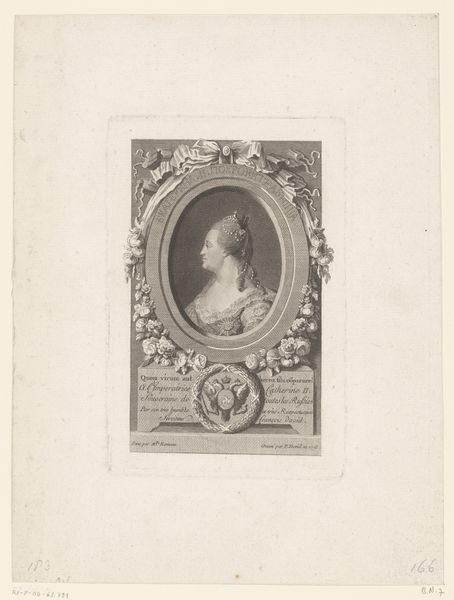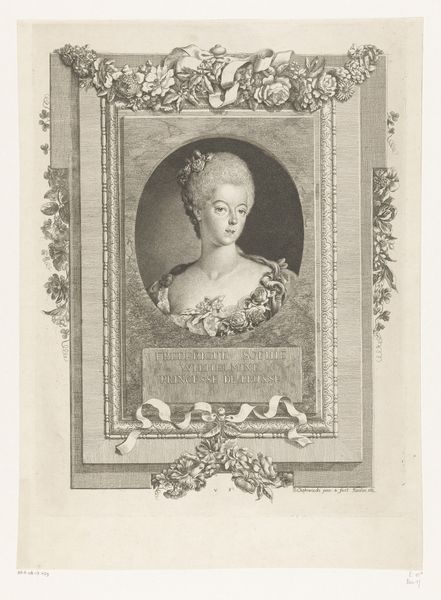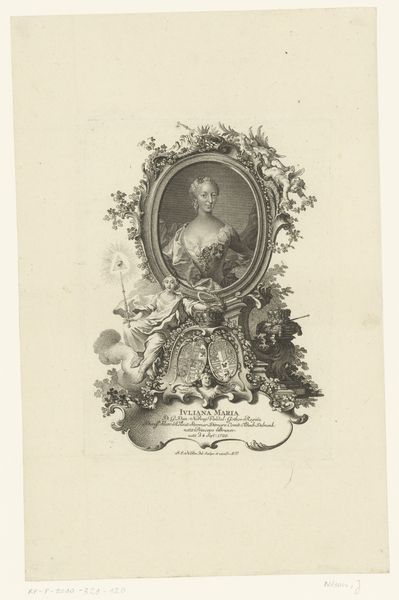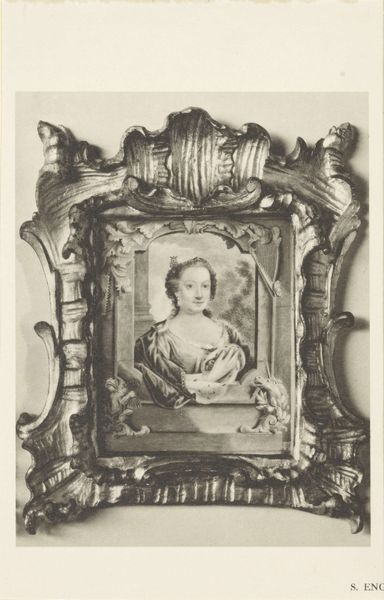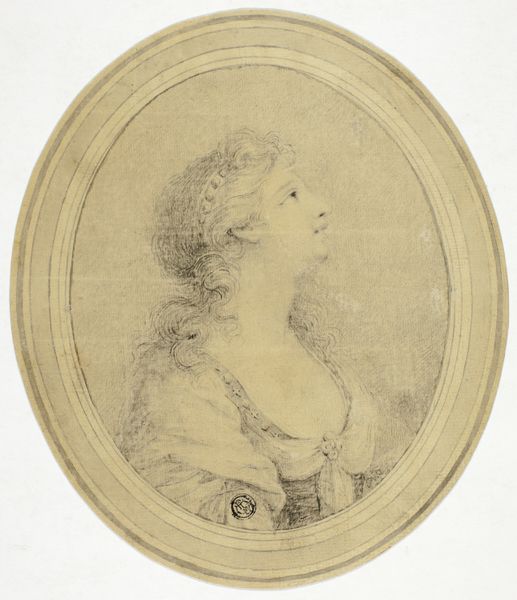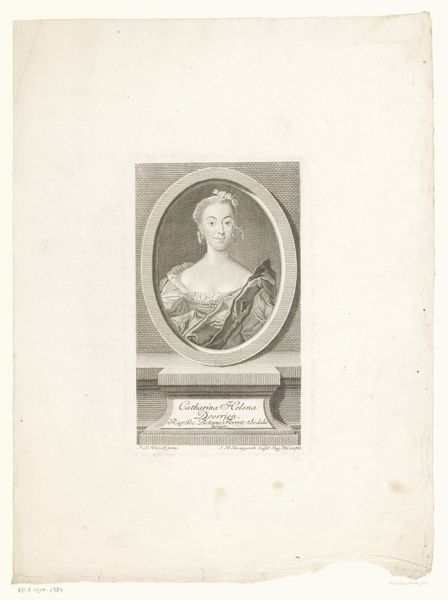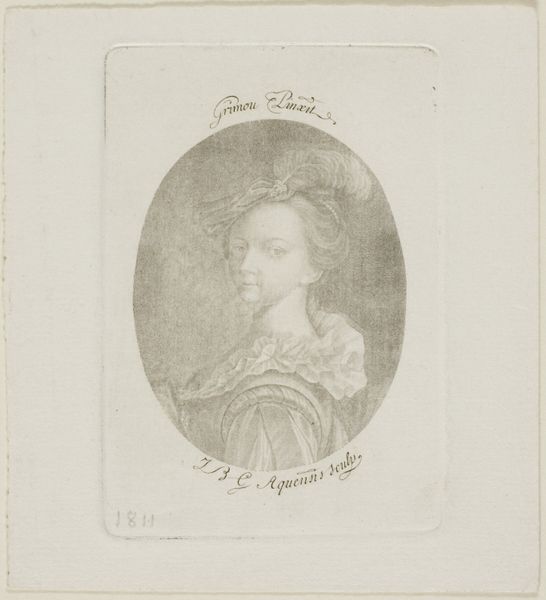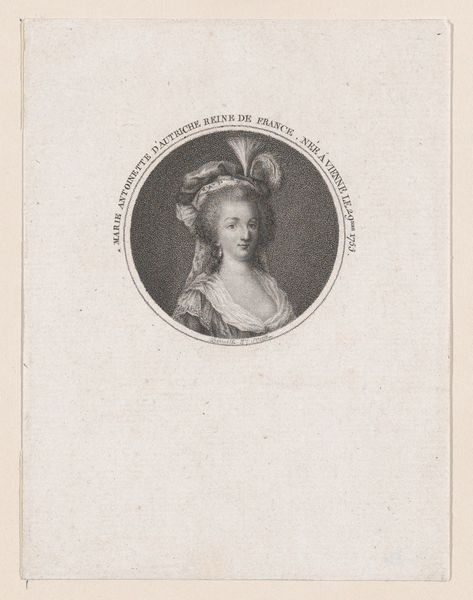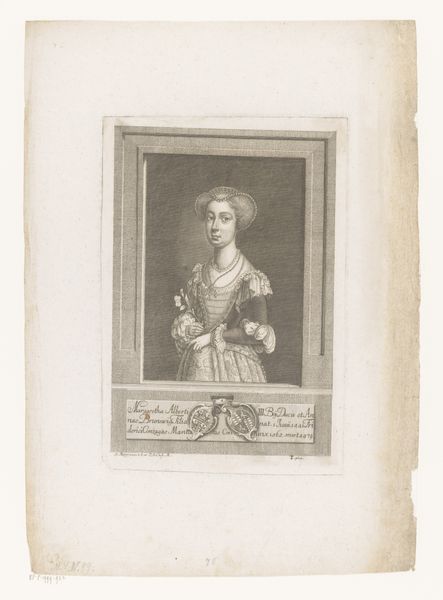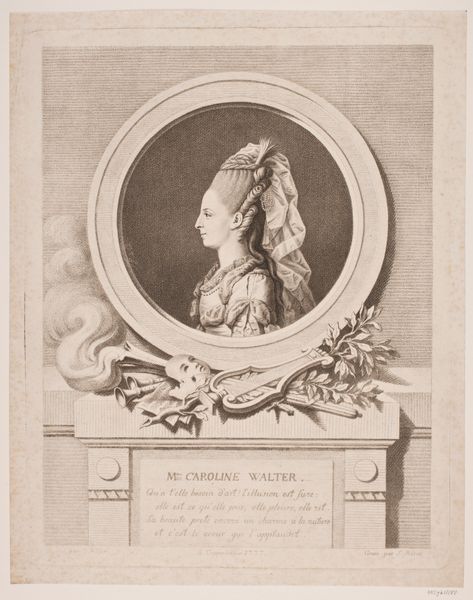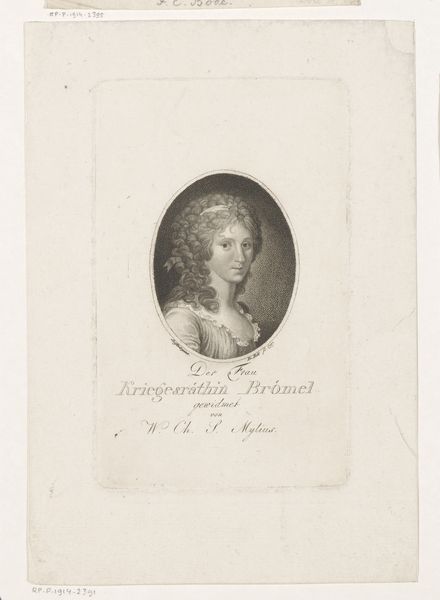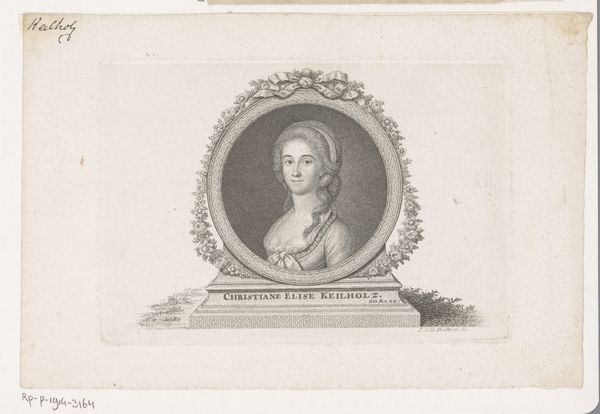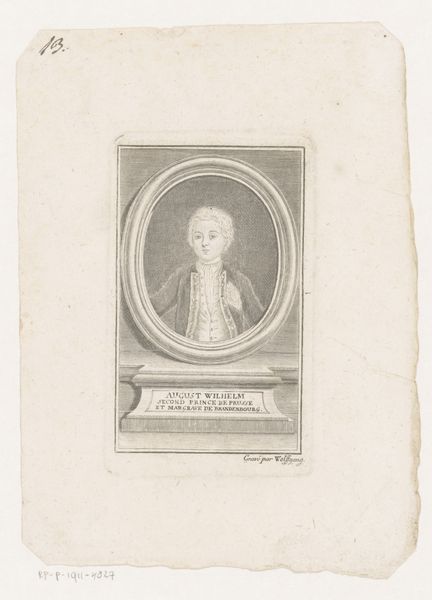
Dimensions: height 75 mm, width 54 mm
Copyright: Rijks Museum: Open Domain
Curator: Here we have an engraving from between 1744 and 1780, titled “Portret van een onbekende jonge vrouw”—Portrait of an Unknown Young Woman. Editor: The delicacy of it is arresting. It’s light as a sigh. The frame feels less like containment and more like a blossoming of her essence. It's almost ghostly with how much white space there is. Curator: Engravings like this were often reproduced as a popular, accessible, form of portraiture during this period, particularly among the emerging middle class who sought to emulate aristocratic styles of representation. Editor: She doesn’t seem overtly aristocratic. Maybe it’s the directness of her gaze, or perhaps the way the dress feels almost casually draped, compared to the more stilted portraiture of the ultra-rich. The framing feels romantic—vaguely pastoral. I keep wondering, what secrets did she hold? What was a typical day for this woman? Curator: It's compelling how you imagine the specifics. What we can say factually is that the 'unknown woman' is particularly revealing, highlighting the complicated relationship between representation, identity, and social class. As the sitter is unnamed, we can speculate that maybe she's not quite significant enough within societal structures to be named and thus individualized for posterity. She is simply the representation of an aspirational woman, or a social type. Editor: Perhaps, yet I also feel an inkling of a more universal feeling about being human when looking at her eyes, it makes me want to imbue her with my own backstory and wonder who I see. It’s the slightly unfocused feel, the sketched nature that somehow expands rather than diminishes her. It allows room for conjecture, longing and mystery, unlike some other baroque-style portraiture of known entities that may feel more about capturing fame and recognition. It is rather ironic, because even her anonymity, has captured the imagination! Curator: Very true. By considering her context, as well as our contemporary projection onto the subject, we come to think more profoundly about the interplay of portraiture, social history, and individual desire. Thank you for these insights! Editor: And thank you, it's made me think more clearly about just how little, or perhaps how much an 'unknown' work like this has to teach.
Comments
No comments
Be the first to comment and join the conversation on the ultimate creative platform.
